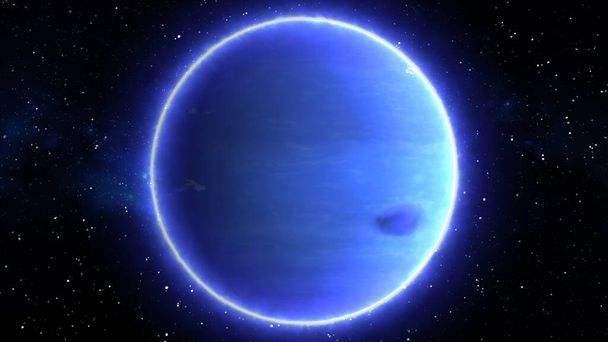New Habitable Zone Planet Discovered in Unique Star System
A Neptune-like planet has been discovered in the habitable zone of a binary star system, thanks to the efforts of citizen scientists. This discovery sheds light on planetary formation and stability in multi-star systems.
Summary
- A Neptune-like planet, TOI 4633 c, was discovered in a binary star system’s habitable zone.
- Citizen scientists played a crucial role in detecting this planet using data from NASA’s Transiting Exoplanet Survey Satellite (TESS).
- The newly found planet has an exceptionally long orbit of 272 days.
- The system also possibly hosts another exoplanet and is orbited by a second star.
- This discovery provides valuable insights into planetary formation and stability within multi-star systems.
- The findings were published in The Astrophysical Journal on April 30, 2024.
- Follow-up observations revealed more peculiarities about the system, including the potential for a second planet and a binary star system.
- The study highlights the significant contributions of citizen scientists in identifying long-orbit exoplanets.
Discovery of TOI 4633 c
The discovery of TOI 4633 c marks a significant milestone in the field of astronomy, highlighting the importance of collaborative efforts between professional scientists and citizen scientists. The Neptune-like exoplanet was identified through the transit method, where the planet crosses in front of its host star, causing a temporary dimming of the star’s light.
The transit method is typically used to identify planets with tight orbits, as they frequently pass between Earth and their host star, blocking light more often. However, TOI 4633 c is unusual due to its long orbit of 272 days. This makes it one of the few long-orbit planets discovered using TESS data.
The discovery of a planet in the habitable zone of a binary star system provides valuable data for understanding planetary formation and stability in multi-star systems. According to Nora Eisner, the lead author of the study and a research fellow at the Flatiron Institute’s Center for Computational Astrophysics, “Finding planets in multi-star systems is crucial for our understanding of how you can make different planets out of the same material.”
Role of Citizen Scientists
Citizen scientists played an instrumental role in the discovery of TOI 4633 c. The planet was first identified by volunteers who sifted through data collected by NASA’s TESS. The Planet Hunters TESS program allows anyone with an internet connection to search for undiscovered planets in the TESS data.
Simon Bentzen, a Danish citizen scientist, expressed his excitement about the discovery: “Every time I spot a possible transit, I can feel my heart beat faster and my excitement rise extensively. I’m very happy that I helped find the new system. I hope that the new planets can help contribute to our understanding of planet formation and help answer other interesting planetary questions.”

Advanced Observations and Follow-Up Studies
After the initial identification by citizen scientists, a follow-up study was conducted by Eisner and her team. This involved analyzing the star’s radial velocity to detect tiny wobbles caused by the gravitational tug of nearby companions.
The follow-up study revealed that what was initially thought to be a single star is actually a pair of binary stars. These stars are currently too close to be distinguished individually from Earth, but archival observations over the past 119 years confirmed the binary nature of the system.
The study also indicated the presence of a potential second planet with a 34-day orbit. The new exoplanet, TOI 4633 c, has the second-longest orbit of any planet discovered with TESS data and is one of only five with orbits longer than 100 days.
Implications for Future Research
The discovery of TOI 4633 c opens new avenues for research into planetary formation and stability in multi-star systems. The brightness of the host star and the long orbit of the planet make this system an ideal target for future exomoon detection campaigns.
Eisner suggests that TOI 4633 c may have satellites or moons, which could offer solid surfaces for life to take hold. “If this planet were to have a moon, that moon would likely have a solid surface, which could then be a great place to find water,” she explains.
Determining the exact layout of the stellar system will take at least 30 years, as the two stars need to move farther apart. Confirming whether the planets orbit the same star or different ones could significantly enhance our understanding of how such systems remain stable over time.
Conclusion
The discovery of TOI 4633 c in the habitable zone of a binary star system underscores the valuable contributions of citizen scientists to the field of astronomy. This finding provides crucial insights into planetary formation and stability in multi-star systems and highlights the potential for future discoveries in similar systems.
References
- Eisner, N. L., Grunblatt, S. K., Barragán, O., et al. (2024). “Planet Hunters TESS. V. A Planetary System Around a Binary Star, Including a Mini-Neptune in the Habitable Zone.” The Astrophysical Journal. DOI: 10.3847/1538-3881/ad1d5c
Hashtags:
#ExoplanetDiscovery, #CitizenScience, #BinaryStarSystem, #TOI4633c, #PlanetHunters, #Astronomy, #TESS, #HabitableZone, #NeptuneLikePlanet, #ExomoonDetection





